Section 110.2 of the National Electrical Code (NEC) establishes the requirement for installations and equipment to be approved and by definition, this means “acceptable to the authority having jurisdiction.” The Canadian Electrical Code (CEC) has a more general requirement for approval when dealing with electrical products. As seen by the following excerpts from the CEC, all electrical products are to be certified by a certification organization accredited by the Standards Council of Canada.
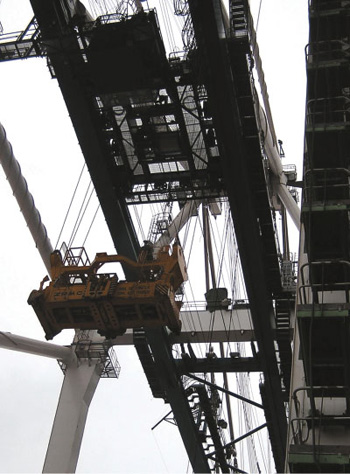
Photo 1. Large port crane for loading and unloading container ships
CEC rule 24.024
2-024 Use of approved equipment (see Appendix A)
Electrical equipment used in electrical installations within the jurisdiction of the inspection department shall be approved and shall be of a kind or type and rating approved for the specific purpose for which it is to be employed.
CEC definition of approved
Approved (as applied to electrical equipment) —
(a) such equipment has been certified by a certification organization accredited by the Standards Council of Canada in accordance with the requirements of
(i) CSA standards; or
(ii) other recognized documents, where such CSA standards do not exist or are not applicable; or
(b) such equipment conforms to the requirements of the regulatory authority.
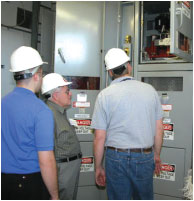
Photo 2. Motor control equipment after modifications made in the field
Within the NEC, 90.7 provides guidance to inspectors for approval of electrical products and equipment. One means is to see evidence the product was listed or evaluated in some way by a testing laboratory recognized by the AHJ. The other method is for the AHJs to complete some evaluation process themselves as a means for approval and 90.7 points at 110.3(A) to provide guidance where the AHJ is performing the assessment. While there is no specific requirement for all electrical products to be listed within the NEC, like there is in the CEC, those jurisdictions adopting the NEC will find many sections with requirements for “listed” products that are stated or implied. One example that could be an implied listing is overcurrent devices conforming to the interrupting rating requirements of NEC 110.9. While this requirement does not state a listing is necessary, it is only through the listing and markings that the interrupt ratings are provided. Examples of areas where the NEC requires listings include such things as luminaires, conduits and associated fittings, conductors, and signs. The word “listed” is used 1017 times in the 2008 version of the NEC.
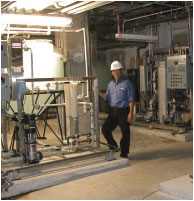
Photo 3. Process water purification unit for industrial plant
Beyond the direct application of the Code, many AHJs across the United States have general requirements for all electrical products to have some sort of independent testing laboratory evaluation completed. This is generally done by separate legislation, ordinance, regulation, or other administrative rule that has been adopted in the state or jurisdiction. In many cases AHJs will accept either listed equipment, or where it is a viable option, field evaluated equipment as complying with these requirements.
This article will:
- Provide a brief history on the evolution of field evaluations and how this process is set to assist the AHJ with the installation approval,
- Discuss in a general way how a field evaluation fulfills some of the need stated above,
- Provide a general overview of the field evaluation process,
- Provide some criteria that can be used to make a determination if a company and/or individual completing field evaluations is competent.
History
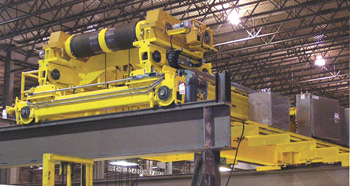
Photo 4. Bridge crane in industrial plant
To the best of the author’s knowledge, the concept and birth of field evaluations happened about 1975. At that time, the AHJs in several jurisdictions were starting to see more and more foreign-made equipment entering industrial plants in the U.S. This equipment looked strange to them and the markings and labeling were often in foreign languages, such as Japanese, Korean, German and Italian. When they opened up enclosures, they saw unmarked wire, odd devices apparently used for overcurrent protection, IEC style devices that didn’t seem compatible with U.S. power applications, etc. The other event that was happening was that the electrical infrastructure in some large cities was being upgraded and when some analysis was done, it was found the available fault current to service switchboards was getting quite high. At that time, many of the service switchboards did not have any ratings for short-circuit interrupting or withstand, what is now termed short-circuit current rating. These AHJs turned to independent field service companies that typically completed commissioning or maintenance testing on power distribution equipment and asked whether these companies could do something to help. These companies formulated a process that was the birth of what today has become known as field evaluations. Later, in the mid to late 1980s and early 1990s, the listing laboratories, including UL, entered into this business similarly at the behest of AHJs.
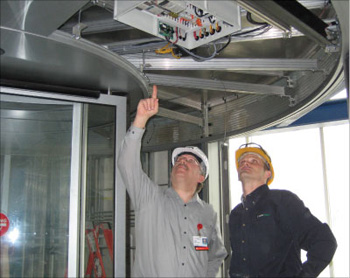
Photo 5. Revolving door assembly before covers installed
In 2000, a group of the nationally recognized testing laboratories (NRTLs) formed an organization called the American Council for Electrical Safety (ACES). This group also included Federal OSHA Technical Branch, CPSC, several individual AHJs and IAEI. The purpose of this group was to bring consistency to electrical products for safety in the United States. Two documents have been created and issued by this group relative to field evaluations. The first in 2003 was the “Recommended Practice and Procedures for Unlabeled Electrical Equipment Evaluation” and dealt with how a field evaluation should be conducted. One key element was that the applicable product safety standard was to be determined and used as the basis for the field evaluation. In 2005, the second document was issued. This was the “Recommended Competency Guidelines for Third Party Field Evaluation Organizations.” This document was based on the ISO/IEC Guide 65 and provided criteria for AHJs to use to judge the competency of both individuals and their companies doing field evaluations. Both these documents are available for download atwww.acil.organd search under the “publications” tab. In 2007, ACES transferred the copyright for both documents over to the National Fire Protection Association who is in the process of forming a technical committee to make these documents into a NFPA standard and a NFPA recommended practice. The work of this committee should commence toward the end of this year.
How Does Field Evaluation Fill a Need?
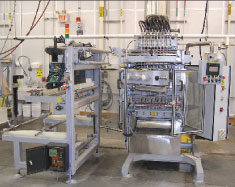
Photo 6. Industrial process equipment
As stated in the introduction, the jurisdictional inspector ultimately is responsible for approving all installations. This approval extends to any equipment that is used to generate, distribute and, in particular, utilize electrical power to complete work or provide a function. This can be from signs, to lighting of areas, power distribution equipment, to complex industrial machines. Some examples of such equipment are included in the photos throughout this article. This is a big task and one method to complete it is to see that all the parts, distribution equipment, luminaires, wire, conduit, cable, boxes, heaters, and industrial machinery are listed by a testing laboratory recognized by that particular jurisdiction. Listing is generally the first and best choice. For the AHJ, all that should be required is seeing the listing mark and verifying the product is being used in accordance with the listing, NEC 110.3(B). The advantage of fully listed products is that they have undergone a complete investigation including potentially destructive testing. A field evaluation has limitations in that destructive testing generally cannot be completed on products in the field and only non-destructive testing is completed.
When the AHJ is completing an inspection and finds products that are not listed by a recognized testing laboratory, there are basically three choices:
- First, is to have the product or equipment replaced by one that is listed, and in many cases that may be the least expensive resolution.
- Second, to try to conduct some level of inspection himself or herself. The difficulty is that most inspectors do not have the time, ready access to the applicable standards, or the background and experience to delve into the products.
- Third, the AHJ can require that someone that is recognized by the jurisdiction as having the capability and qualifications to conduct such an inspection do a field evaluation.
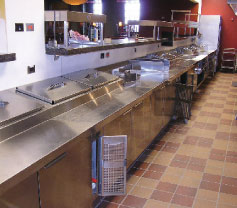
Photo 7. Commercial kitchen serving line requiring safety and sanitation evaluations
This situation may be true for new equipment but also is generally applied to used equipment being relocated, and even to listed equipment that has been modified after leaving the manufacturer. Not all products can be field evaluated. Certain products by the nature of the design, construction and applications must go through the listing process to determine suitability for use. Examples of products that generally cannot be field evaluated include medical products where there is patient contact, or products installed in hazardous locations. AHJs are not bound to blindly accept products that are field evaluated. If the AHJ has questions that are not resolved in the technical report, he should contact the field evaluation provider and get his questions answered.
The Process
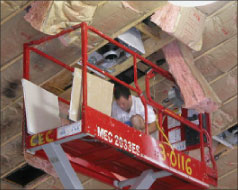
Photo 8. Ceiling luminaires in large church sanctuary
The process used to conduct a field evaluation is covered in the ACES “Recommended Practice.” First and foremost is to identify and have the latest revision of the applicable product safety standard. There is no one standard that fits all products so inspectors need to be wary if they find someone completing field evaluations to the NEC, or to one or two standards where the product does not fit into the scope of that standard. Recently, an AHJ told the author about a field evaluation being completed on a liquified natural gas (LNG) dispenser using just NFPA 79, the Electrical Standard for Industrial Machinery. The AHJ correctly rejected the field evaluation since the scope of NFPA 79 clearly does not cover this type of product. The scopes of the UL product standards are available on the internet for viewing by anyone at http://ulstandardsinfonet.ul.com.
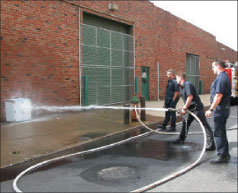
Photo 9. Field hose test of outdoor enclosure
In general there is a construction inspection looking at the various components to first determine if they are critical components, ones directly safety related, and then to see that they are listed or recognized. In some cases, uncertified components can be dealt with by some extra construction protections, grounding and bonding, as well as applying listed overcurrent protection. One aspect that helps the evaluator in this regard is to actually know the final installation site to see what the environment really is, how the product is being applied, and who is expected to be using or in contact with the product. Some critical components that are there to provide overcurrent protection, such as fuses or circuit breakers, have to be UL Listed to ensure the reliability and functionality are present in the circuit for the other components and full assembly. Other components such as wire and devices in safety related circuits also have to be listed to have assurance or reliability to function as intended. The construction inspection also evaluates the enclosure(s) that contain electrical parts, the methods of interconnecting subassemblies (wiring methods), the conductors being used, grounding and bonding, and markings. One of the biggest discrepancies found is missing or inadequate nameplates.
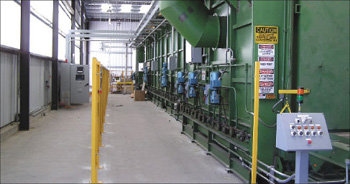
Photo 10. Alloy wheel heat treating furnace requiring electrical and gas control evaluations
Once the construction inspection is done and documented, then the “Recommended Practice” identifies some basic testing to be completed. A field evaluation is not just an inspection, when properly done there is some testing to be completed. The basic testing should include input tests for voltage and current under normal full load conditions. These results are compared to the nameplate to ensure the test results correlate to the nameplate data. Insulation resistance testing should be done on all power circuits, with any sensitive electronic components removed or bypassed. It is impossible to see into wire bundles and complex equipment to ensure there is not a problem with the insulation. The insulation resistance test done at 500 or 1000 volts dc is non-destructive and gives evidence as to insulation integrity. In some cases, where the product standard calls for it as a normal production test, a full ac dielectric withstand test should be completed. Grounding and bonding continuity should be verified by appropriate testing. Interlocks and emergency stop functions are to be verified as performing as intended in the design. Where equipment is cord- and plug-connected, without regard to be fixed in place or portable, leakage current testing should be completed to ensure a shock hazard does not exist when the equipment ground is lost and/or the polarity of the supply is somehow reversed. Outdoor equipment needs to ensure that the enclosures are suitable either by being listed with the correct type rating, such as Type 3R, or by conducting the rain test in the field.
If all is found to be compliant with the product standards and the test results do not find any issues, then a field evaluated product mark may be applied and a full engineering report prepared. Again, the “Recommended Practice” provides guidance on the minimal contents that should be provided in that engineering report. Once completed, the report is issued to the client and directly to the AHJ. Unless there are extenuating circumstances, UL issues all these reports to the client and the AHJ at the same time in an electronic PDF format. The label on the product and the accompanying engineering report detailing the standard(s) used, the process that was followed, and limitations on the meaning of the label, provide the AHJ the information and support to assist in making the decision to approve the installation.
Competencies
The second document that was issued by ACES was a “Recommended Competency Guideline.” This document was a result of many AHJs asking how they can determine if a field evaluation company that provides services in their area is qualified. Presently, there is no national accreditation for field evaluation companies so it is left to the individual AHJs to determine who will be recognized. Many AHJs have used the testing laboratories’ NRTL status as a guide, but the OSHA Nationally Recognized Testing Laboratory accreditation does not include field evaluations in that process. In fact, there may be NRTLs that can do a laboratory evaluation and listing for a product, but do not have the resources to properly do a field evaluation on that product outside the laboratory.
The “Recommended Competency Guideline” took the standard that is used to evaluate testing laboratories, doing listing, ISO/IEC Guide 65, and adapted it to fit the field evaluation situations. Key elements in the “Recommended Guideline” are the field-evaluation body organization and technical resources to ensure projects are being done correctly. There must be a training program with records of training received by individuals doing field evaluations, and of how their competency in various product categories was determined. Records of individual training as well as of the work completed must be maintained for a minimal period of time. The one addition in the “Recommended Competency” that is not in the ISO/IEC Guide 65 document is that the field evaluation company must have a test and measurement equipment calibration program to ensure all test and measurement equipment is calibrated for any testing done. The test equipment calibration program used by UL follows the ISO/IEC 17025 requirements for “General Requirements for the General Competence of Testing and Calibration Laboratories.”
Summary
There are cases where an AHJ will come across electrical products, industrial machinery or other equipment that does not bear the mark of a recognized testing laboratory. These may be new products manufactured domestically or imported. They may also be used equipment being relocated with facility moves, or existing equipment that is being modified. The AHJ still ultimately has to approve the installation, which will include these products. Where listed equipment is not found, one avenue to assist the AHJ in this process is to conduct a field evaluation by a recognized and competent field evaluation company such as UL. The “Recommended Practice” and “Recommended Competency Guidelines” provide the AHJ with tools to determine if they are getting the level and quality of service that is needed so they are confident in making that approval decision.
For more information on UL Field Evaluations go to www.ul.com/field or contact UL’s Customer Service at (877) 854-3577, prompt number 2.










Find Us on Socials